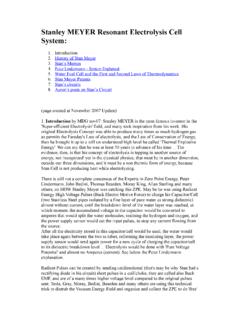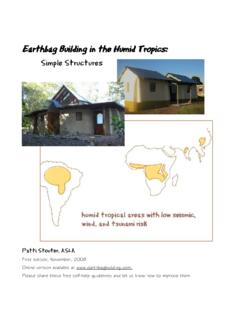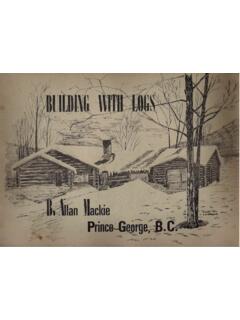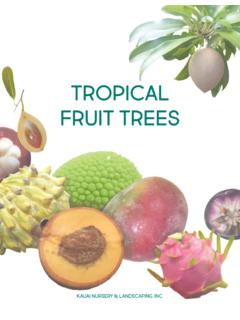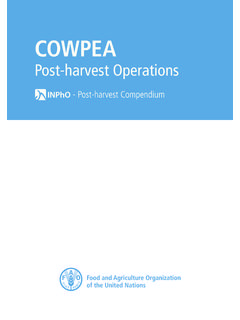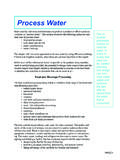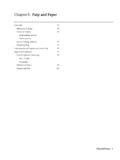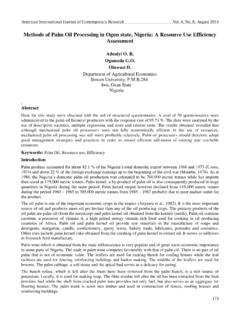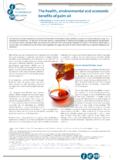Transcription of Oil Extraction - Rivendell Village
1 OIL Extraction Oil is extracted from several seeds, nuts and fruits (Table 1 provides some common examples) for use in cooking and soapmaking1, cosmetics, detergents, or as an ingredient in other foods such as baked or fried goods. Moisture content (%) Oil/fat content (%) Seeds and beans Cotton Rape Mustard Sesame Sunflower Safflower 5 9 7 5 5 5 15-25 40-45 25-45 25-50 25-50 30 Nuts Coconut (fresh) Copra Groundnut (shelled) Palm kernel nuts (shelled) Shea nut Shea nut 40-50 3 4 - - - - 35-40 64-70 28-55 - 46-57 34-44 - Fruits Oil palm Avocado Olive - 69 50-70 56 11-28 - Table 1: Sources of oil.
2 Raw material preparation Oilseeds and nuts should be properly dried before storage, and cleaned to remove sand, dust, leaves and other contaminants. Fruits should be harvested when fully ripe, cleaned and handled carefully to reduce bruising and splitting. All raw materials should be sorted to remove stones and mouldy nuts. Some moulds, especially in the case of groundnuts, can cause aflatoxin poisoning. When storage is necessary, this should be in weatherproof, ventilated rooms which are protected against birds, insects and rodents.
3 Some raw materials (for example groundnuts, sunflower seeds) need dehusking (or decorticating). Figure 1 shows a simple manually-operated groundnut decorticating machine. Decortication is important to give high yields of oil and reduce the bulk of material to be processed. However, expellers normally require a proportion of fibrous material in order to work and, particularly with groundnuts, some husk is normally added to allow oil to escape more freely from the press. Coconut is dehusked and split manually by skilled operators.
4 Most oilseeds (eg copra, palm kernels and groundnuts) need grinding in mills before oil Extraction to increase the yield of oil. A separate Technical Brief provides details of coconut processing. 1 See Technical Brief: Soapmaking . Figure 1: A groundnut decorticating machine Figure 2: A seed scorcher Oil Extraction Practical Action Some seeds (especially groundnuts for example) are conditioned by heating to 80-90oC using a seed scorcher (Figure 2 shows a typical small-scale example a separate heat source is necessary beneath the scorcher).
5 All oil-bearing materials need to have the correct moisture content to maximise the oil yield. Using small-scale expellers, oilseeds and nuts are usually processed cold (ie without additional heating). Oil Extraction Methods Extraction methods include: Manual presses Ghani Expeller Solvent Extraction Traditional methods Oil is extracted from, for example, fresh coconut, olive, palm fruit shea nut by separating the flesh and boiling it in water. Salt can be added to break any emulsion which is commonly formed and the oil is skimmed from the surface.
6 In palm oil processing the fruit is first heated in a digester . Figure 3: A manual coconut grater Manual methods Oil can be extracted by pressing softer oilseeds and nuts, such as groundnuts and shea nuts, whereas harder, more fibrous materials such as copra and sunflower seed can be processed using ghanis. Pulped or ground material is loaded into a manual or hydraulic press to squeeze out the oil-water emulsion. This is more efficient at removing oil than traditional hand squeezing, allowing higher production rates.
7 Fresh coconut meat is removed from the shell using a manual or motorised grater (Figure 3). See Technical Brief on Coconut Processing for details of wet processing of coconuts. Equipment required The equipment needed to set up a small or medium scale oil Extraction enterprise falls into four main categories: pre- Extraction equipment; dehullers or decorticators, seed/kernel crackers, roasters, grinding mills. Extraction equipment; ghani, manual bridge press or ram press, expellers equipment for basic refining of the oil; filters, settling tanks for caustic soda to treat free fatty acids FFA (do not use aluminium tanks).
8 Packaging equipment. The specific equipment required will depend on the particular crop being processed, the final oil quality required and the scale of operation. Presses have a number of different designs, commonly based on a bridge press. In all types, a batch of raw material is placed in a heavy-duty perforated metal cage and pressed by the movement of a plunger. The amount of material in the cage varies from 5-30 kg with an average of 20 kg. Layer plates can be used in larger cages to provide a constant pressure through the bulk of 2 Oil Extraction Practical Action material and speed up removal of oil.
9 The pressure should be increased slowly to allow time for the oil to escape. Screw types are more reliable than hydraulic types but are slower and produce less pressure. Except where a lorry jack is used (Figure 4), hydraulic types are more expensive, need more maintenance, and risk contaminating oil with poisonous hydraulic fluid. Ram Press A long pivoted lever moves a piston backwards and forwards inside a cylindrical cage constructed from metal bars spaced to allow the passage of oil. At one end of the piston's stroke, it opens an entry port from the seed hopper so that seed enters the press cage.
10 When the piston is moved forward, the entry port is closed and the oilseed is compressed in the cage. As a result, oil is expelled from the oilseed and emerges through the gaps in the cage. Compressed seed is pushed out through a circular gap at the end of the cage. Figure 4: Oil press with a hydraulic jack Ghanis are widely used in Asia but less so in other areas. A heavy wooden or metal pestle is driven inside a large metal or wooden mortar (Figure 5a). The batch of raw material is ground and pressed and the oil drains out.
